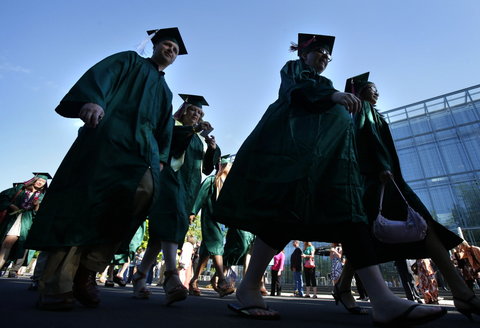 Associated Press University of Oregon students head to graduation ceremonies last month.
Associated Press University of Oregon students head to graduation ceremonies last month.
If you’ve been following the debate over the potential increase in the interest rates on subsidized student loans, you may be wonder how it’s turning out. Today is, after all, July 1 — the deadline by which Congress had to act to fend off a doubling of the rates.
Congress didn’t act before the Fourth of July recess so the interest rate on new, subsidized Stafford loans doubled to 6.8 percent, from 3.4 percent, as scheduled under current law. (Subsidized Stafford loans are federal loans based on financial need; unsubsidized federal loans are available to all students, regardless of need, and rates on those loans were already at 6.8 percent).
But there’s apparently still hope that rates may be knocked back down retroactively in time for students who need to borrow for college this fall. According to the nonprofit Project on Student Debt, the Senate is scheduled to vote July 10 on a bill that would keep the 3.4 percent rate for an additional year, starting today.
The project has a one-page summary of the interest rates that are in effect for the main types of federal student loans, as well as other loan terms for the 2013-14 academic year. And it has summarized the various proposals floating around for what to do about the loan rates.
How would an increase in the subsidized loan rates affect your plans to borrow for college?
Article source: http://bucks.blogs.nytimes.com/2013/07/01/another-chance-on-student-loan-rates/?partner=rss&emc=rss